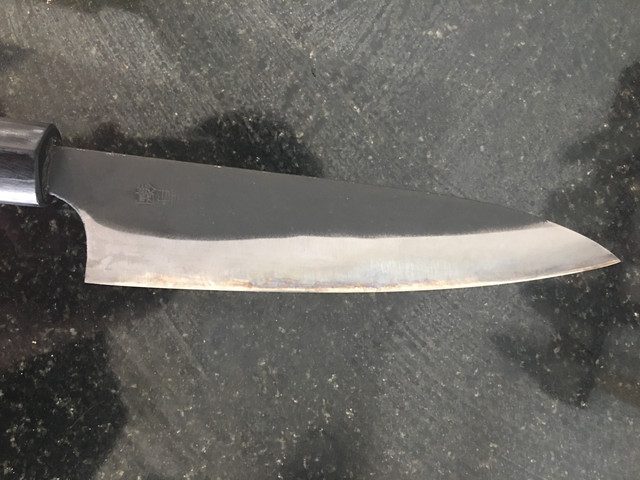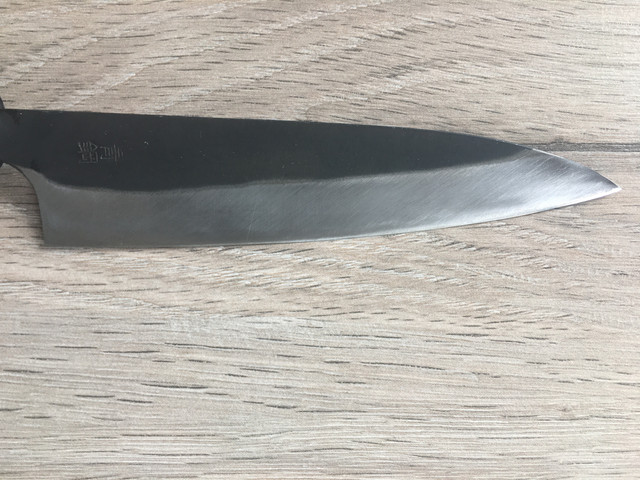Panamapeet
Senior Member
- Joined
- Oct 24, 2016
- Messages
- 608
- Reaction score
- 205
Hi all, I just tried to thin a knife (135mm blue 2 petty) for the first time (pictures below) and I have a few very basic questions. As said, I'm quite the amateur so please go easy on me :O
Before:

After JNS 300, 800 and synthetic red aoto:

As you can see there are still (a lot of) scratches left. Should I progress to a finer stone or use some kind of other polish like Flitz to remove these scratches?
A couple other questions I've been having are:
1) how do you know if you have thinned enough? Do you just eyeball it? Or try to cut something during thinning?
2) what is the best way to make sure each sided is thinned evenly?
3) thinning did not affect my edge, which was pretty sharp before I started thinning. Is this normal?
Before:

After JNS 300, 800 and synthetic red aoto:

As you can see there are still (a lot of) scratches left. Should I progress to a finer stone or use some kind of other polish like Flitz to remove these scratches?
A couple other questions I've been having are:
1) how do you know if you have thinned enough? Do you just eyeball it? Or try to cut something during thinning?
2) what is the best way to make sure each sided is thinned evenly?
3) thinning did not affect my edge, which was pretty sharp before I started thinning. Is this normal?




